Establishing Big Sagebrush Seedlings on the Colorado Plateau
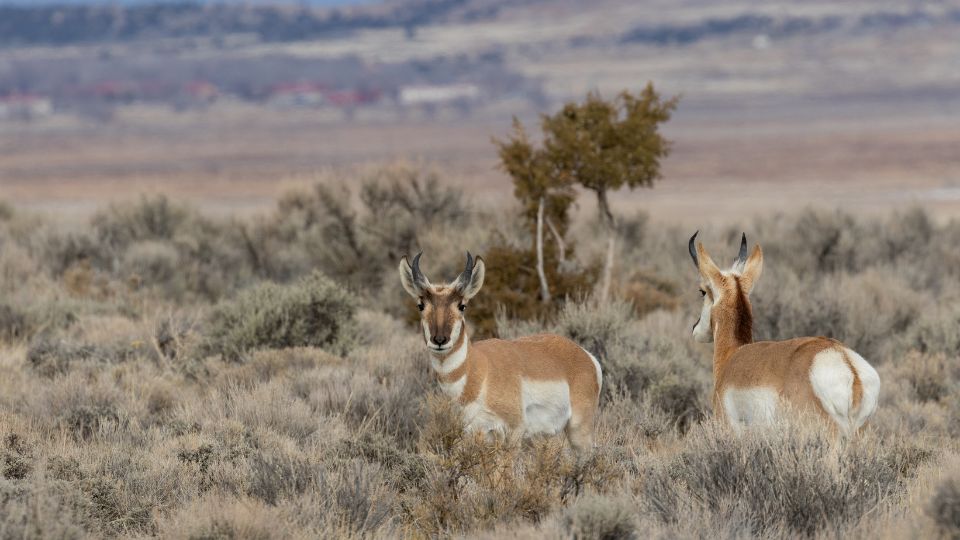
Background

Figure 1. Study Area (black box) Within the Colorado Plateau (gray), With Respect to the Broader Sagebrush Ecosystem (green) and Western U.S.
Big sagebrush (Artemisia tridentata) is a foundational rangeland species important to wildlife habitat across the western U.S. On the Colorado Plateau, sagebrush is important browse for ungulates, such as mule deer and pronghorn, which motivates a great deal of restoration effort. However, most scientific knowledge of big sagebrush comes from the Great Basin. We know much less about how to restore sagebrush on the Colorado Plateau, where soils and precipitation patterns are different and conditions are warmer and drier. Factors such as soil type and precipitation vary across rangeland landscapes, and these factors in turn affect restoration outcomes and ultimately mean that “one size fits all” management strategies are not effective across large, complex landscapes.
We know from studies in the Great Basin that sagebrush seedling establishment is strongly influenced by soil surface moisture1,2 and soil physical properties like texture and depth.3,4 However, how soil texture and depth affect sagebrush establishment—and ultimately restoration efforts—on the Colorado Plateau is unknown. For example, finer (i.e., higher in clay content) soils hold more water. But under hot, dry conditions, soils with a coarser (i.e., sandier) surface layer can be advantageous because they are well drained and allow water to percolate deeper into the soils instead of being lost to surface evaporation.7 In the Colorado Plateau’s sandy soils, it may be that sandier, well-drained soils are only advantageous if they are also shallow enough (due to the presence of bedrock or other water- and root-restricting layers) to retain soil water in the root zone available for plant uptake
Research
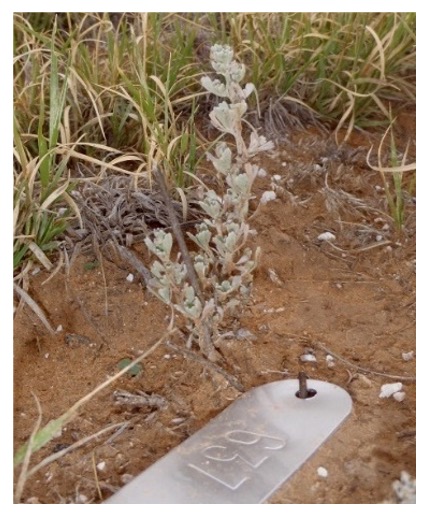
Figure 2. Sagebrush Seedling Marked With a Numbered Metal Tag for Tracking Survival Over Time
Wyoming big sagebrush seedling establishment studies were conducted in San Juan County, Utah, on the Colorado Plateau (Figure 1).
- 2,200 seedlings were planted across 20 study sites, selected for different combinations of soil texture and depth.
- Seedlings were planted in 2015 and 2016 and tracked over time (Figure 2).
- Sites were on Bureau of Land Management land in the Beef Basin area where sagebrush die-offs have recently occurred.
Sagebrush Seedlings
- Sagebrush seedlings were planted in May, and most losses occurred between July and November following planting.
- When planted in a wet year, seedlings growing in the sandiest, least deep soils had the highest probability of surviving. This was not true for seedlings planted during the average precipitation year, likely because survival was so limited by lack of moisture (Figure 3).
- Sagebrush seedlings also grew taller in sandier soils.
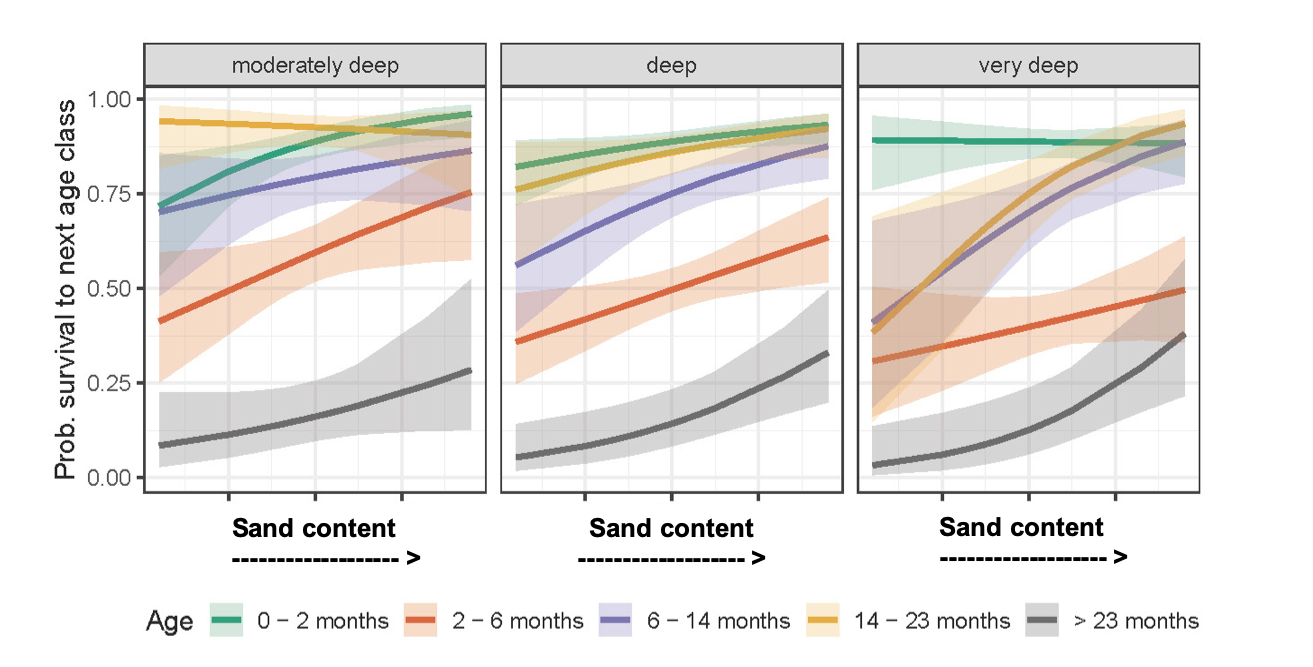
Figure 3. Survival Probability for Five Age Classes of Sagebrush Seedlings Planted in Beef Basin in a Wet Year (2015)
Notes. The “moderately deep,” “deep,” and “very deep” labels correspond, respectively, to 74, 113, and 151 cm depths. During a survival bottleneck from 2–6 months, probability of seedling survival was higher on soils that were sandier (i.e., red lines slope up in all three panels) and less deep (overall survival of 2–6 month plants highest in far left panel). In the far right panel, the purple and yellow lines show that although older seedlings planted in very deep soils survived poorly in the sandiest soils (~0.38 probability of survival), higher sand content improved that survival ( ~0.88 probability).
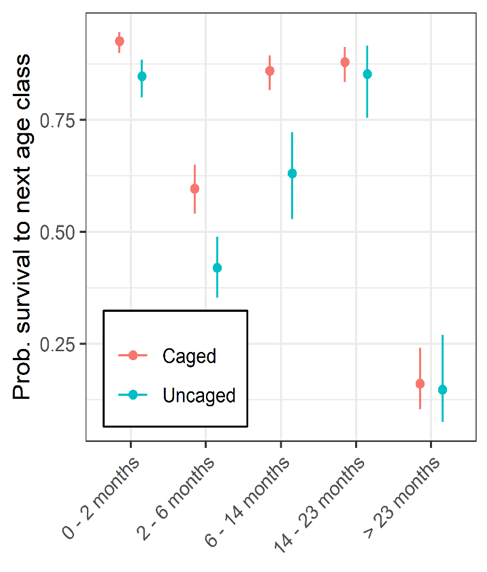
Figure 4. Survival Probability for Caged and Uncaged Plants for Five Age Classes of Sagebrush Seedlings Planted in Beef Basin in a Wet Year (2015)
- Precipitation during the year of planting had a considerable influence on sagebrush seedling survival.
- For seedlings planted in a wet year (2015), survival 1 year later was 38%, but 1-year survival was only 4% for seedlings planted in an average precipitation year (2016).
- After 3 years, the survival rate was 7% for seedlings planted in the wet year and <1% for seedlings planted in the average year.
- When feasible, supplemental watering for the first one to three summers post-planting may help increase sagebrush seedling establishment.
- Natural recruitment of sagebrush is known to be highly episodic,8 with establishment typically occurring during periods of higher moisture. Restoration attempts during drier periods may require repeated plantings.
- Establishing cages around sagebrush seedlings increased survival by 37%, likely because cages provided shade, protected seedlings from wind and sand, and helped “harvest” precipitation (Figures 4 and 5). This was true even for seedlings planted in the drier year, which suggests that caging—even if only for the first 1–2 years following planting—may be a practical broadscale approach to increase seedling survival.
Applications to Restoration
- Planting in coarser, shallower soils in wet years and caging seedlings could improve sagebrush restoration efforts on the Colorado Plateau.
- Digital soil mapping is an emerging technology that could be used to identify and prioritize areas with soil textures and depths that are best for establishing sagebrush seedlings (Figure 6).
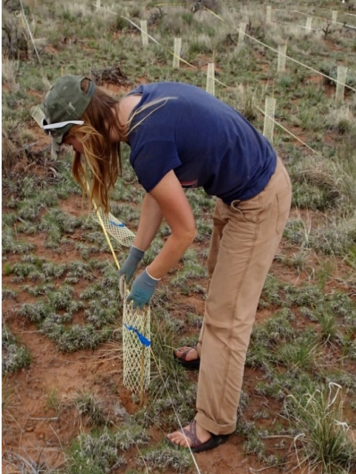
Figure 5. Seedlings Being Caged With Plastic Mesh Seedling Protector Tubes
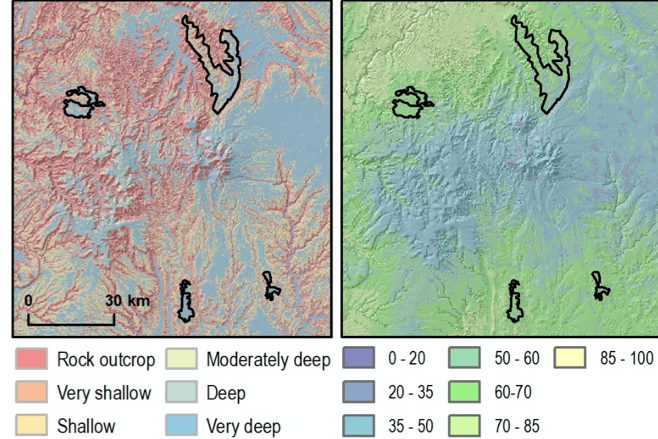
Figure 6. High-Resolution Soil Depth Maps (left) and Sand Content (right) for an Area of the Colorado Plateau Encompassing Four Sagebrush Restoration Areas (outlined in black; Beef Basin is the northwest site)
Note. Soil data are from Brungard et al. (2021)5 and Nauman & Duniway (2020).6
Acknowledgments
Photos were provided by the authors.
The authors acknowledge the content based on, and Figures 1, 3, 4 and 6 republished from, Veblen et al. 2022.9
References
-
Brungard, C. B., Nauman, T., Duniway, M., Veblen, K., Nehring, K., White, D., Salley, S., & Anchang, J. (2021). Regional ensemble modeling reduces uncertainty for digital soil mapping. Geoderma, 397, 114998. doi:https://doi.org/10.1016/j.geoderma.2021.114998
-
Shriver, R. K., Andrews, C. M., Pilliod, D. S., Arkle, R. S., Welty, J. L, Germino, M. J., Duniway, M. C., Pyke, D. A., & Bradford, J. B. (2018). Adapting management to a changing world: Warm temperatures, dry soil, and interannual variability limit restoration success of a dominant woody shrub in temperate drylands. Global Change Biology, 24, 4972–4982. doi:https://doi.org/10.1111/gcb.14374
-
O’Connor, R. C., Germino, M. J., Barnard, D. M., Andrews, C. A., Bradford, J. B., Pilliod, D. S., Arkle, R. S., & Shriver, R. K. (2020). Small-scale water deficits after wildfires create long-lasting ecological impacts. Environmental Research Letters, 15(4), 044001. doi: https://doi.org/10.1088/1748-9326/ab79e4
-
Williams, J. R., Morris, L. R., Gunnell, K. L., Johanson, J. K. & Monaco, T. A. (2017). Variation in sagebrush communities historically seeded with crested wheatgrass in the eastern Great Basin. Rangeland Ecology Management, 70, 683–690. doi: https://doi.org/10.1016/j.rama.2017.05.003
-
Davidson, B. E., Germino, M. J., Richardson, B., & Barnard, D. M. (2019). Landscape and organismal factors affecting sagebrush-seedling transplant survival after megafire restoration. Restoration Ecology, 27, 1008–1020. doi:https://doi.org/10.1111/rec.12940
-
Nauman, T. W. & Duniway, M. C. (2020). Predictive soil property maps with prediction uncertainty at 30 meter resolution for the Colorado River Basin above Lake Mead [Data release]. U.S. Geological Survey. https://doi.org/10.5066/P9SK0DO2.
-
Noy-Meir, I. (1973). Desert ecosystems: Environment and producers. Annual Review of Ecology and Systematics, 4, 25–51. doi: https://doi.org/10.1146/annurev.es.04.110173.000325
-
Urza, A. K., Weisberg, P. J., Board, D., Chambers, J. C., Kitchen, S. G., & Roundy, B. A. (2021). Episodic occurrence of favourable weather constrains recovery of a cold desert shrubland after fire. Journal of Applied Ecology, 58, 1776–1789. doi: https://doi.org/10.1111/1365-2664.13911
-
Veblen, K. E., Nehring, K. C., Duniway, M. C., Knight, A., Monaco, T. A., Schupp, E. W., Boettinger, J. L., Villalba, J. J., Fick, S., Brungard, C., & Thacker, E. (2022). Soil depth and precipitation moderate soil textural effects on seedling survival of a foundation shrub species. Restoration Ecology, 30, 313700. doi: https://doi.org/10.1111/rec.13700
Published May 2023
Utah State University Extension
Peer-reviewed fact sheet
Authors
Kari E. Veblen, Eric Thacker, Mark Larese-Casanova, Kyle Nehring,
Utah State University, Department of Wildland Resources;
Mike Duniway, U.S. Geological Survey, Southwest Biological Science Center;
Colby Brungard, New Mexico State University, Department of Plant and Environmental Sciences

